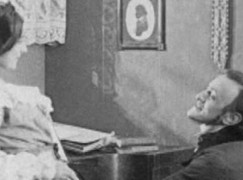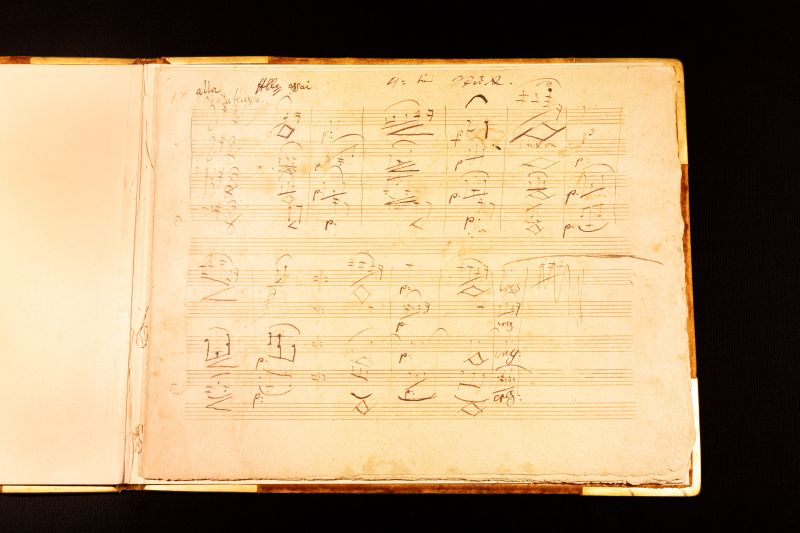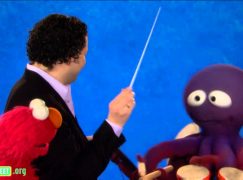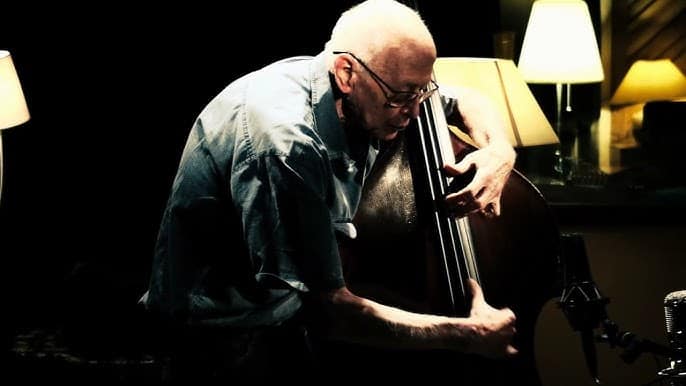Nagano to conduct Ring on period instruments
mainConcerto Köln plans to present one Ring opera a year from 2022, played on early-19th century instruments.
The Cologne University of Music, the Research Institute for Music Theater at the University of Bayreuth and the Institute for Speech Science at the Martin Luther University in Halle-Wittenberg are all being consulted. The state of North Rhine-Westphalia will pay.
Kent Nagano will conduct.
Tuning will be A=435.
Voices could be small.

More here.






How about using theorbos instead of harps? The greatest inventions of the 19th century were the incandescent bulb and valved horn! Wagner must have thought so to or he wouldn’t have commissioned the construction of the instrument now known as the Wagner tuba.
The original German article does NOT claim that early 19th century 8nstruments will be used. That would indeed be anachronistic. By the time of the Ring’s premier there had been many significant developments in instrument technology, mainly in the winds and brass. (The strings wouldn’t change much between Mendelssohn and the early 20th century.)
I do hope they will employ what seems to have been Wagner’s preferred string layout. Divided violins but with the firsts on the RIGHT.) He used this layout in Dresden and at Bayreuth, where it is still employed.
Sixtus, this layout works according to the given acoustics of the theater. You gotta use your ears more than your eyes.
How about a thunder machine and real animal horns as scored?
Gotta be the Joke of the new Decade…
Interesting project, wrong conductor.
Actually, a pretty stupid project whoever the conductor. Might as well play the Ring on mouth organs. Forget it.
Give Nagano a chance ! Pierre Boulez was the odd conductor for the Bayreuth Centennal Ring, and controversial production is considered one of the best !
Do we know of any comments from Wagner regarding developments of orchestral instruments during his lifetime?
Wagner conceived the ‘Wagner Tuba’ as he felt the need for an intermediate ‘sound’ between the higher French horns and the lower trombones and tubas.
He was also introduced to the newly built saxophone by its inventor himself (Adolphe Sax) but Wagner disliked that sound …
“He was also introduced to the newly built saxophone ….. but Wagner disliked that sound”
I for one am grateful that we have been spared the Siegfried Saxophone Call.
Seriously, though, I would like to have heard the OAE Rhinegold.
OAE/Rattle Rheingold
https://www.youtube.com/watch?v=CUFWNKFajjA
‘the Siegfried Saxophone Call’
Now I have to get that thought out of my head.
Though the modern French-style flute is generally credited to Theobald Boehm (a German), Wagner hated them and was vocal about it. He felt that Cylindrical flutes were loud and lacking character.
He preferred conical ‘simple system’ flutes, which continued to be used in many German and Austrian orchestras into the 20th Century.
During Wagner’s lifetime these ‘simple system’ flutes became increasingly complicated in terms of keywork, but the basic acoustic form remained the same.
Simon Rattle did Rhinegold about 15 years ago with OAE. Reviews commented favourably on the balance between voices and orchestra, the singers not having to force things to be heard.
Right. I am appalled at all the uninformed snarky remarks.
So am I. Some comments are sad to read, it shows that many still do not understand what Harnoncourt, Minkowski, Roth, van Immerseel, Jacobs, Currentzis or Rhorer have been doing or are doing. Speaking of instruments, there are plenty of instruments of the Wagner period available on the market, and many orchestras in Europe buy them, restore them and use them more than properly. Take some time to listen to the sound of orchestras like Les Siècles, each repertoire they play is performed with the appropriate instrumentarium and pitch, and this is not second class performances, Berlioz, Ravel, Mahler etc. It is way more insteresting than what for instance has been delivered in Vienna the last days. Singers love to perform with period instruments, because they do not need to kill their voices with unnatural pitches. Verdi explained many times why he rejected the 440 Hz pitch: only with a 434hz are the voices able to unveil the beauty of a melodic line and deliver the appropriate colours he composed for. 440Hz and up is criminal.
There is no lack of understanding, just appreciation for the fact that there are far more examples of etiolated bore-fests than successful efforts.
440 and up is criminal?! Try telling that to Monteverdi. I guess 465 is an unpardonable offense by that standard.
I hope this will be recorded and available to hear, but it’ll be spread over 4 years! And what’s wrong with Nagano? When he’s good, he’s great!
Shall early 19th century Valkyries be employed as well? Will they be more sylphlike in their heft to reflect the drop in tuning? This stinks of austerity measures!
(hyperbolic retching)
That should be a noticeably brighter and edgier sound from the brass with smaller bores on earlier instruments and i think sharper contours to mouthpieces.
Something like the brass of a swing-era jazz band.
I have read that that the Wagner tubas were not ready for the first Ring and that conventional brass band instruments were substituted.
It was a real “crazy idea”, says Alexander Scherf, the artistic director of the Concerto Köln orchestra. After a joint concert, the ensemble was still sitting together with Kent Nagano when the double bass player asked the conductor when he would finally conduct Richard Wagner’s “Ring of the Nibelung” with them. It was a typical musicians’ joke; after all, Concerto Köln has become known in historical performance practice primarily for music of the 18th, or at most the early 19th century. But nobody had expected this: Nagano, who is considered to be rather sober but certainly energetic, was so fascinated by the idea that he wanted to take it seriously.
In recent years, historical performance practice has increasingly reached the limits of modernity, and there have also been isolated advances with Wagner. For example, conductor Thomas Hengelbrock has realized a “Parsifal” in historically informed performance practice. And the conductors Bruno Weil and Marc Minkowski brought their experience with early music to bear in performances of the “Flying Dutchman”. Even an all-rounder such as Simon Rattle approached the second act of “Tristan und Isolde” with historical performance techniques. And that the conductor Hartmut Haenchen made hundreds of corrections and new performance instructions in the sheet music at the “Parsifal” 2016 in Bayreuth could be seen as a cautious opening for such approaches in the sanctum of Wagner’s care. But so far no one has dared to take part in the 15 to 16 hour “Ring”. Concerto Köln will thus be the first ensemble to play this work, which was premiered in 1876, on gut strings again. From 2021 onwards, starting with the “Rheingold”, it intends to present the entire cycle successively in semi-staged performances in the Cologne Philharmonie.
Language was very important to the composer – he even paid attention to individual consonants
It is a project that has something of Siegfried’s fight against the dragon in the third part of the tetralogy. After all, Concerto Köln basically consists of just 20 dedicated musicians, but it takes more than a hundred for the “Ring”. In addition to all the temporary staff, students from the Institute of Early Music at the Cologne Music Academy will be mobilised. Kent Nagano, on the other hand, has a great deal of experience with Wagner, but has so far not exactly emerged as an expert in historical performance practice. Two very unequal partners must therefore come together from two different ends. At the Kölner Philharmonie, they are therefore currently approaching music by Wagner and his contemporaries together in several preparatory concerts.
But not only practically, but also theoretically, they want to prepare the matter thoroughly, which makes the project stand out from the previous advances. Under the supertitle “Wagner readings”, Concerto Köln is cooperating with the Cologne Academy of Music, the Research Institute for Music Theatre at the University of Bayreuth and the Institute for Speech Science at the Martin Luther University Halle-Wittenberg. The State and Art Foundation of North Rhine-Westphalia have provided money not only for extended rehearsal periods, but also for a post-doctoral and post-doctoral position. Kai Hinrich Müller, the academic director of the “Wagner Readings”, for example, sees in the notations of Wagner’s premiere assistants “an arsenal of knowledge that is often not called upon”. Another important source is the extensive corpus of Wagner’s collected writings, which have often been separated from the work at the reception desk.
When singing, dramatic interpretation took precedence over pure sound
In it, Wagner repeatedly expresses himself concretely on practical performance questions, for example on those of pronunciation, right down to the handling of individual consonants. How closely his efforts here were interwoven with the development of standard stage German in the second half of the 19th century was recently learned at a conference of the renowned Halle Institute of Speech Science. For example, the singing teacher Julius Hey, who is none other than “Little Hey”, with whom actors still learn to speak on stage today, collaborated in the rehearsals for the premiere of “Ring” in 1876.
For the singers, the rehearsals began with the declamation of the pure text, which is what they now want to keep up in the preparatory singing workshops in Cologne. In the end, Wagner strived for a new ideal of music theatre, which also gave priority to dramatic composition over the pure sound of the voice when singing. Accordingly, in his writings he repeatedly demanded maximum clarity in the text, “without which drama as well as music, speech as well as melody remain equally incomprehensible, and these, on the other hand, are sacrificed to trivial opera effects”, as it is said, for example, in “Das Bühnenweihfestspiel in Bayreuth”.
The fact that the singers are often not well understood in his musical dramas to this day is not necessarily due to an insufficient pronunciation. This is also due to the greater volume of modern instruments, especially when they do not play under a sound cover as in the Bayreuth Festival Theatre. This will be different by nature when the strings at Concerto Köln play on gut strings – even if Wagner was sometimes quite dissatisfied with the low volume, which is why he replaced the violas with the larger Ritter’s viola, for example.
The orchestra has almost all woodwind instruments rebuilt for this project
He was a tireless sound tinkerer. Sometimes he preferred older instruments to newer ones, then again he developed completely new ones in close cooperation with instrument makers. Some of these, the Wagner tubas for example, are still used in his music today, while others such as the Knight’s viola and the alto oboe, which Wagner preferred to the English horn, are no longer used in modern orchestras. For questions of detail, the Cologne project will not be based on the premiere of the “Ring”, but on that of “Parsifal” in 1882, which is “much better documented”, says Kai Hinrich Müller.
In any case, Concerto Köln will have to have almost all woodwind instruments completely rebuilt, if only because it wants to play Wagner with a much lower tuning tone than is usual today. In 1858 in Paris, A was the first standard tuning pitch to be set at 435 Hertz. However, the conductor Hartmut Haenchen, certainly one of the most knowledgeable experts on the sources, argues that the tuning pitch continued to vary regionally long after that, and in some cases was even higher than today. Haenchen is also sceptical about the idea of letting the strings play largely vibrato-free with Wagner, as Concerto Köln is planning for its performances.
It is foreseeable that some Cologne approaches will be as controversial as they were at least in the early days of historical performance practice for older music. “We are taking ourselves out of the history of reception and approaching Wagner like an unknown 18th century manuscript,” says Alexander Scherf. It will only be possible to judge how this sounds in performances from 2021 onwards. The battle of the dragons has begun.
https://www.sueddeutsche.de/kultur/ring-der-nibelungen-concerto-koeln-wagner-nagano-1.4736029
Translated with http://www.DeepL.com/Translator (free version)
Lovely article, Beaumnont.
And Haenchen is totally right re: regional variations of pitch. Pre-20th century pitching was in no way always lower than A=440.
Wagner’s menstrual cycle on period instruments? Wow I can’t wait for that.
Wagner was ahead of his time – by far – not behind it. Daft!
Not sure I would want to hear Nagano conduct the Ring no matter what instruments are used.
Kent Nagano is one of the most talented and innovative programers/conductors around. This is not terribly surprising: he pushes the envelope routinely.
Nagano on this new endeavor: “I have collaborated together with Concerto Köln for several projects in the past and am convinced that I have found two most competent partners in the Cologne ensemble and the Kunststiftung NRW who are able to provide the scientific basis for a historically-informed reading of Richard Wagner’s “Ring”. Together we will pursue this endeavor and bring the music to the stage!”
Source: https://www.pr2classic.de/en/category/kent-nagano-en/page/8/
Why ? What is the point? There are already plenty of bad “Rings” out there and the presence of Nagano guarantees for an eminently boring and useless result.
Will there be vibrato? Next time I see Maestro Nagano on the street in Montreal I will have to ask him about that!
I think is better without vibrato.
The woodwind players will have a lot of work to do, I guess, learning the key systems of 19th Century instruments.
I have an old “Albert” system clarinet. One would spend quite a bit of time becoming proficient on that.
It is told that Nagano wants John Williams to write an Opera.